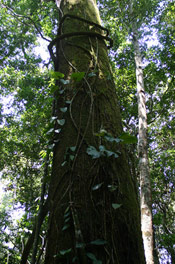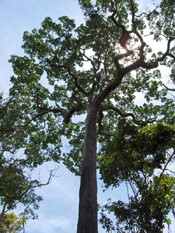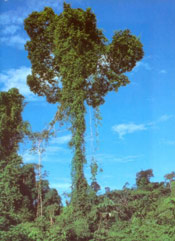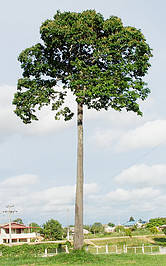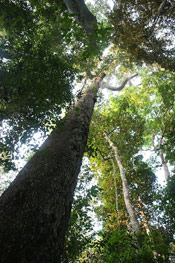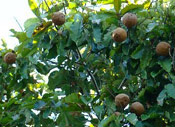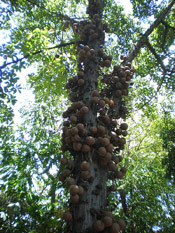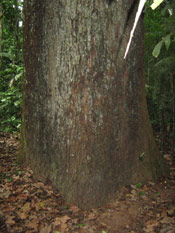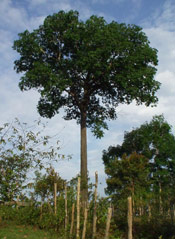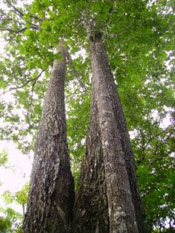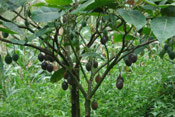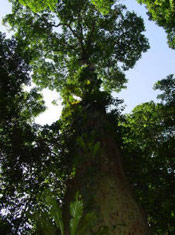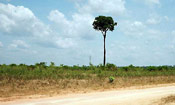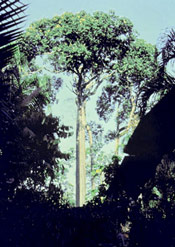Brazil Nut Tree Pictures
Brazil Nut Tree Picture Gallery welcome, we have lots of great brazil nut photos.
In Brazil Nut Tree Picture Gallery you will find lots of nice pictures of brazil nut trees.
Below there a lot of facts on brazil nut trees, including information about the brazil nut tree species, planting information, and much more.
This is valuable and useful information that can help you to learn more about the brazil nut tree.
Brazil nuts gathers in South America are called 'castanheiros' . They wear wooden hats to protect their heads, old style of hard hat, from five pound coconut-sized 'pods' that fall from the Brazil Nut Tree.
Brazil Nuts
To view each brazil nut tree picture in full size just click on the tree picture. Enjoy these pictures of brazil nut trees.
Brazil Nut Tree Pictures
Brazil Nut Tree, Facts on Brazil Nut Trees
Here is some detailed information on brazil nut trees.
The Brazil nut (Bertholletia excelsa) is a South American tree in the family Lecythidaceae, and also the name of the tree's commercially harvested edible seed.
The Brazil nut is a large tree, reaching 30 to 45 metres (100 to 150 ft) tall and 1 to 2 metres (3 to 6.5 ft) trunk diameter, among the largest of trees in the Amazon Rainforests. It may live for 500 years or more, and according to some authorities often reaches an age of 1,000 years. The stem is straight and commonly unbranched for well over half the tree's height, with a large emergent crown of long branches above the surrounding canopy of other trees.
The bark is grayish and smooth. The leaves are dry-season deciduous, alternate, simple, entire or crenate, oblong, 20 to 35 centimetre long and 10 to 15 centimetres broad. The flowers are small, greenish-white, in panicles 5 to 10 centimetres long; each flower has a two-parted, deciduous calyx, six unequal cream-colored petals, and numerous stamens united into a broad, hood-shaped mass.
Brazil nut trees produce fruit almost exclusively in pristine forests, as disturbed forests lack the large-body bees of the genera Bombus, Centris, Epicharis, Eulaema, and Xylocopa which are the only ones capable of pollinating the tree's flowers. Brazil nuts have been harvested from plantations but production is low and it is currently not economically viable.
A freshly cut Brazil nut fruitThe Brazil nut tree's yellow flowers contain very sweet nectar and can only be pollinated by an insect strong enough to lift the coiled hood on the flower and with a tongue long enough to negotiate the complex coiled flower. For this reason, the Brazil nut's reproduction depends on the presence of the orchid Coryanthes vasquezii, which does not grow on the Brazil nut tree itself. The orchids produce a scent that attracts small male long-tongued orchid bees (Euglossa spp), as the male bees need that scent to attract females. The large female long-tongued orchid bee pollinates the Brazil nut tree. Without the orchid, the bees do not mate, and therefore the lack of bees means the fruit does not get pollinated.
Despite their name, the most significant exporter of Brazil nuts is not Brazil but Bolivia, where they are called almendras.
Brazil nuts for international trade come entirely from wild collection rather than from plantations. This has been advanced as a model for generating income from a tropical forest without destroying it. The nuts are gathered by migrant workers known as castanheiros.
Brazil nuts are 18% protein, 13% carbohydrates, and 69% fat. The fat breakdown is roughly 25% saturated, 41% monounsaturated, and 34% polyunsaturated.
As well as its food use, Brazil nut oil is also used as a lubricant in clocks, for making artists' paints, and in the cosmetics industry.
The lumber from Brazil nut trees (not to be confused with Brazilwood) is of excellent quality, but logging the trees is prohibited by law in all three producing countries (Brazil, Bolivia and Peru). Illegal extraction of timber and land clearances present a continuing threat.
Thank you for visiting Brazil Nut Tree Pictures category at Tree Pictures Online.com, please come back soon for more great tree pictures!
Pictures Sites
Fireplace Pictures -
Tree Pictures -
Gazebo Pictures -
Symbols & Their Meanings
Resume Samples -
Church Pictures -
Manufactured Home Pictures
Natural Log Siding -
Shadow Puppets -
Caribbean Islands
Play Touch Games -
Waterfall Pictures
Make Hot Pictures - Job Application Forms
![]()


